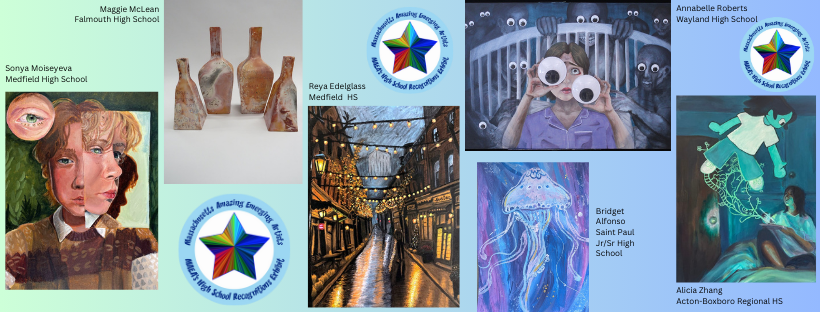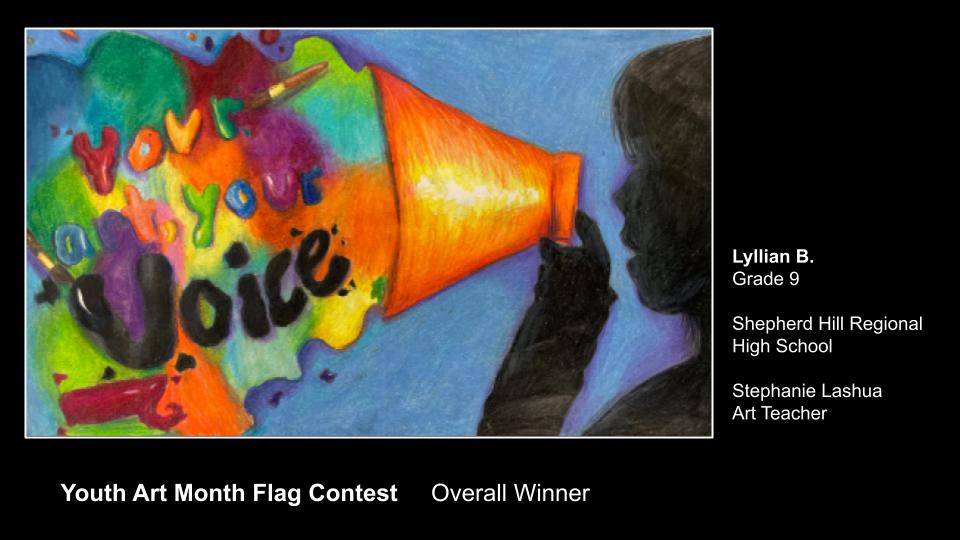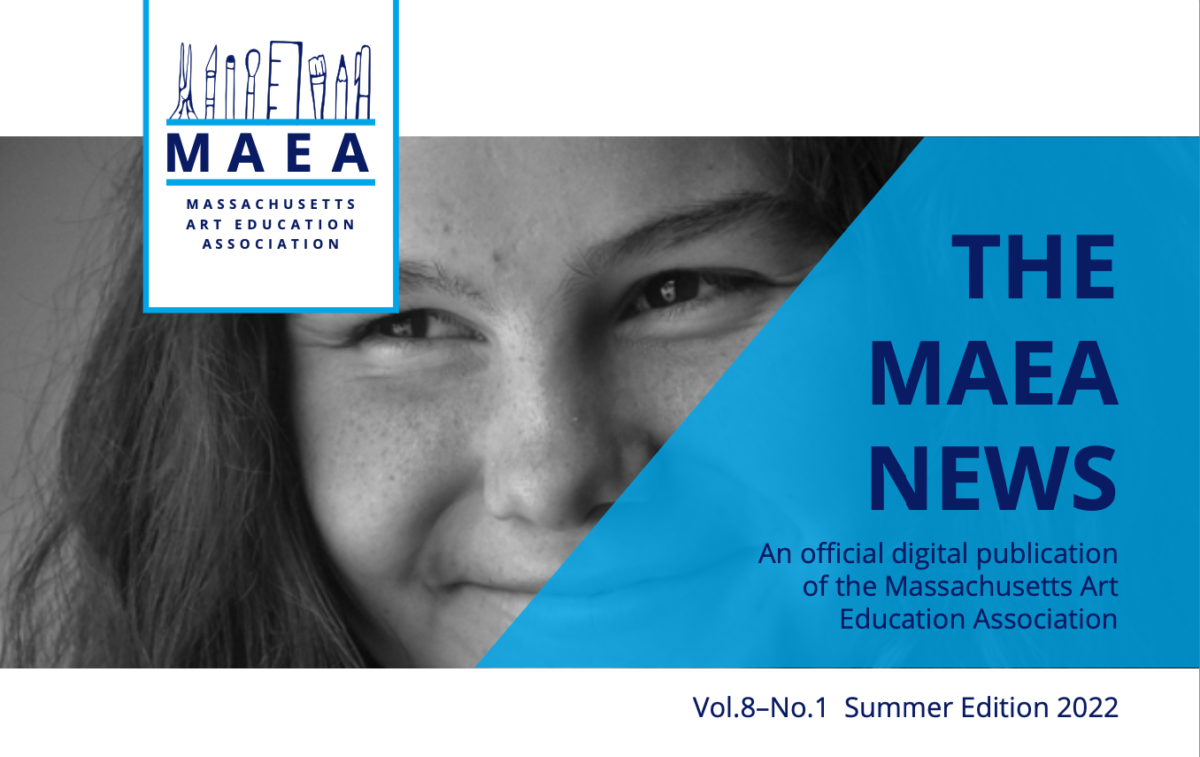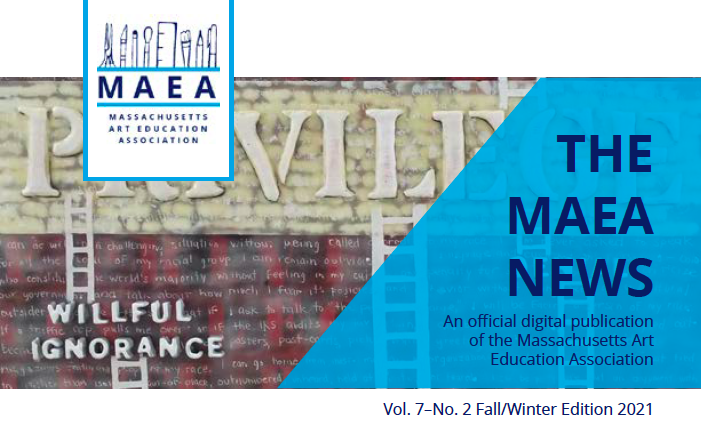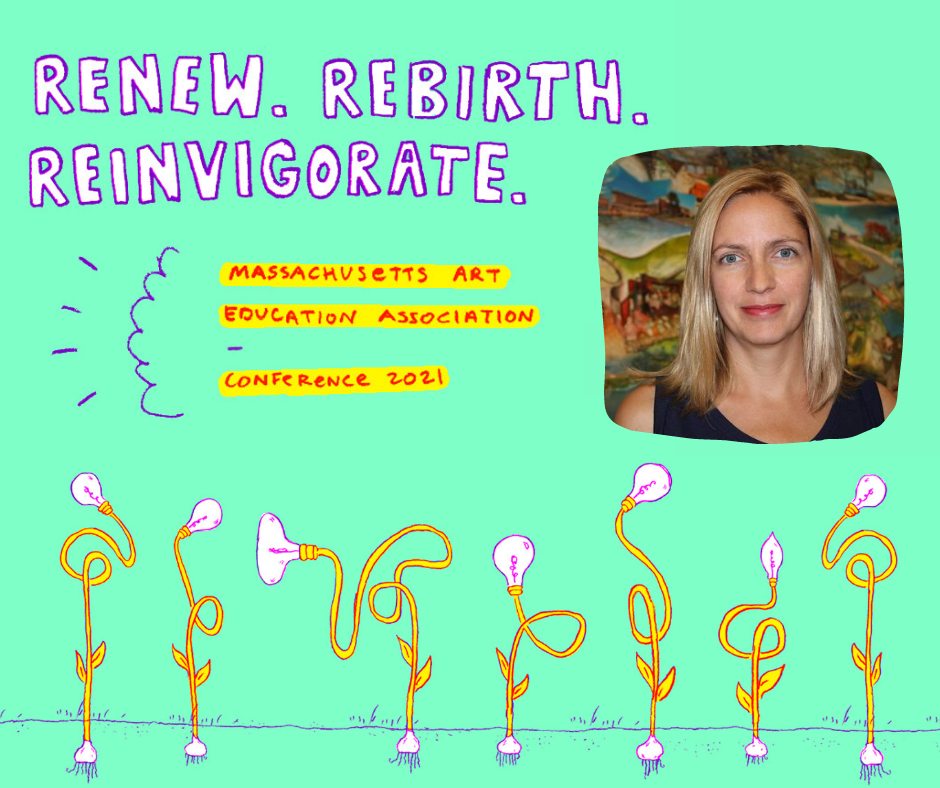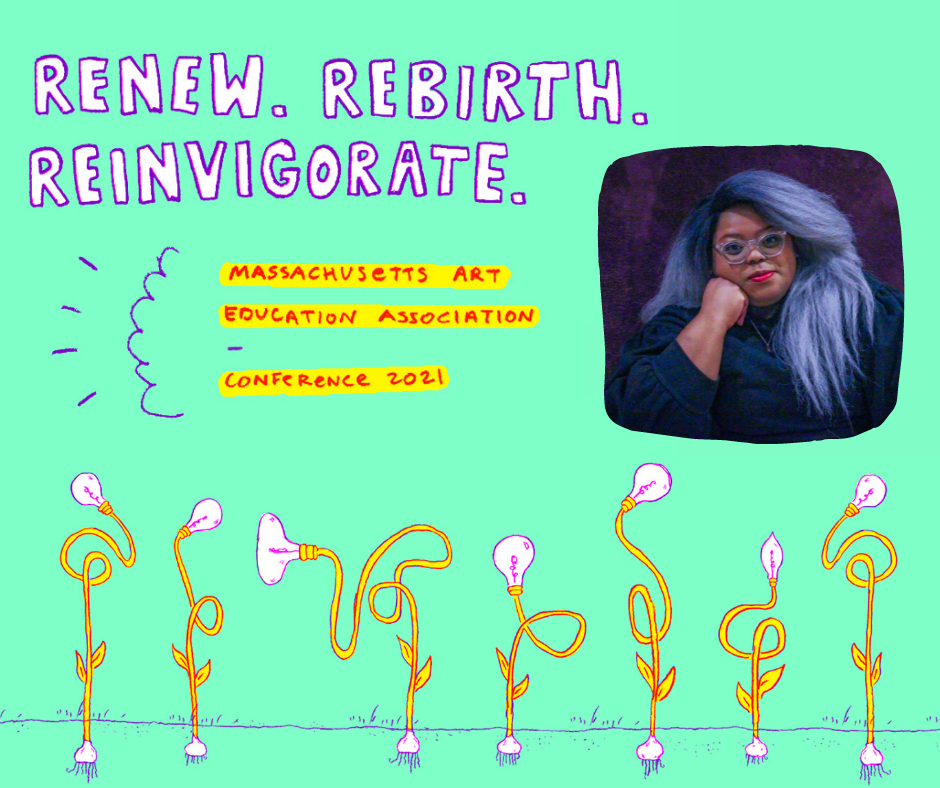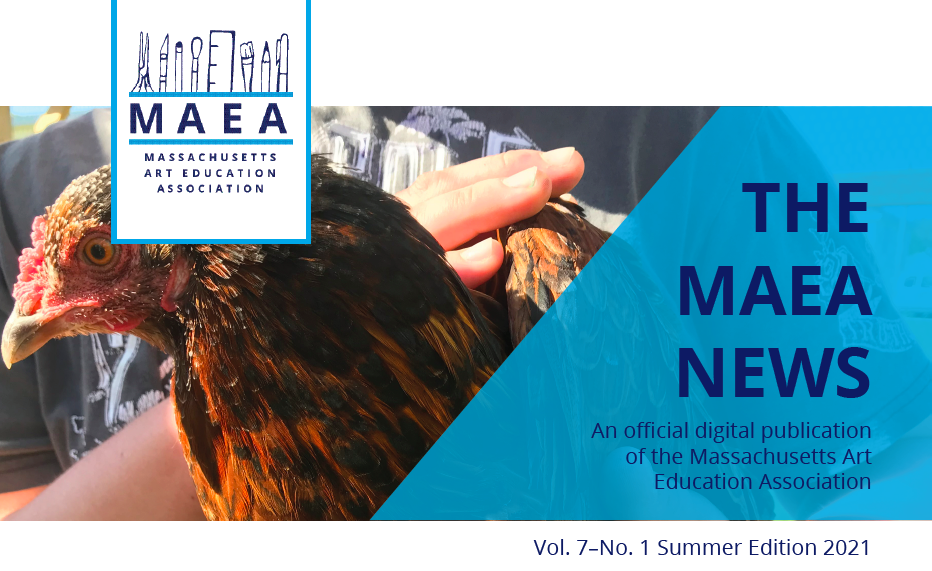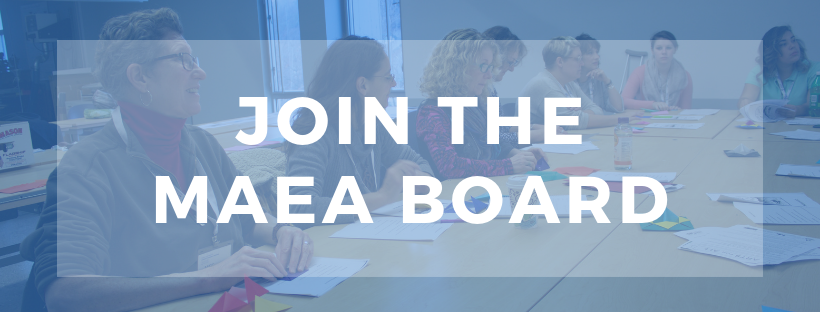Each year your association hosts a statewide flag contest open to all student artists in Massachusetts. Every visual arts educator in the state is invited to submit no more than ten flags for the contest. “Flags” are essentially posters created on paper and don’t require any special equipment or supplies. The statewide winning composition IS printed on a fabric flag by the MAEA Youth Art Month committee.
There are four categories (k-2, 3-5, 6-8, 9-12) with generous prizes for winning artists AND their teachers in each category. Plus the Grand Prize winning flag is sent to represent Massachusetts at the National NAEA convention! What an honor for a young artist to have their work displayed in a national capacity to represent their state!
I know the idea of adding “one more thing” to an art teacher’s already packed schedule and curriculum can feel impossible, but I have some tips and tricks to make participating quite doable and well worthwhile.
First, I decided to make participation in the contest a requirement for one grade level only. Students in all grades were encouraged to participate as time allowed, or they could create a flag at home if they didn’t have enough class time.
I found the flag contest the perfect jumping off point to teach about the work of graphic designers. In our highly visual environment, it is essential young people learn to recognize the influence of graphic media on the feelings they elicit and the choices we make.
We worked as a class to examine a variety of print and digital media paying attention to the font, images, colors and even symbols. It was exciting to see the light bulbs come on as young artists began to recognize some of the subtle messaging presented. This was followed by having small groups work together to identify an example of graphic design and share ideas about the target audience, the intended message, and how that was communicated with images and text.
The following class period I introduced the flag contest and the criteria for entry. With a quick Google search, we looked at several previous winning flags. Students were asked to look at the flag and see if they could deduce what the theme or message was the year the flag was created.
Finally it was time to start brainstorming ways one might represent the theme from last year’s contest- Art Connects Us. I was impressed with the ideas students shared including, puzzle pieces, bridges, plant roots, gears, hands, etc. We also included a google search for reference visuals of symbols and images showing connection. Students then went on to generate several ideas and select one to develop further into a draft on the flag size “rough draft” paper. When artists were satisfied with their idea and had checked spelling, they moved on to Final Flag paper. I used 90# drawing paper.
I chose to leave the media options open to anything that particular grade level had experience working with. This was a great option for my students as they didn’t require much support around the technical skills of using media and student motivation was increased with the media choices available.
Being able to submit the flags digitally was another bonus. No trip to the post office for me! And I was able to use the physical flags around the school to promote our program and the importance of Visual Arts education.
I hope this article is helpful and that you too will participate in the 2024 Youth Art Month Flag Contest- Dream in Art. For planning purposes, digital entries will be accepted now through January 12, 2024 via this link.
Amy Hussey, K-5 Visual Arts Teacher, Reading, MA
MAEA Youth Art Month Co-chair

